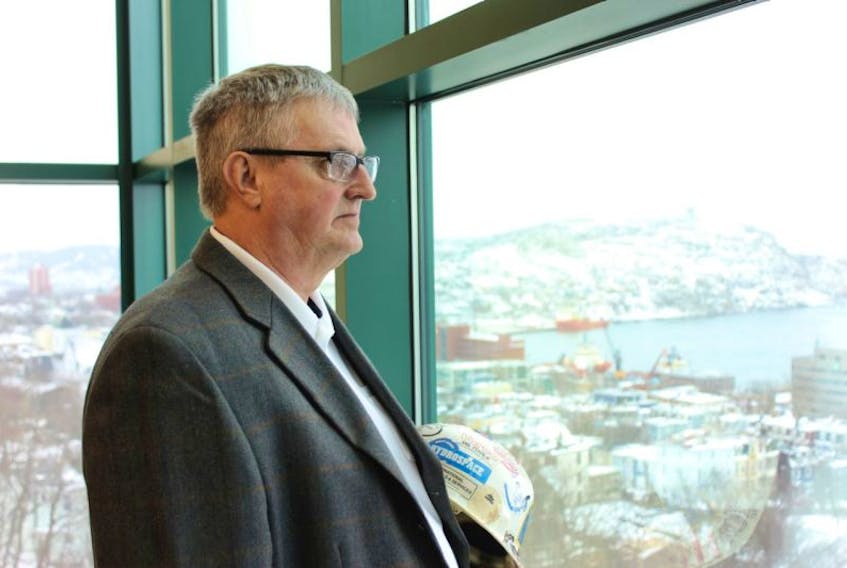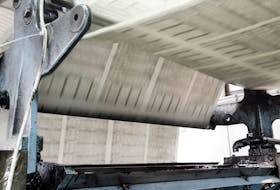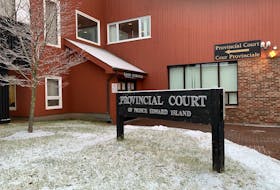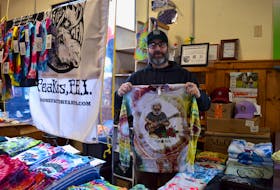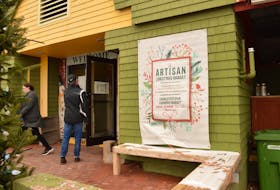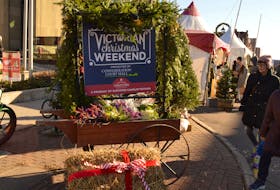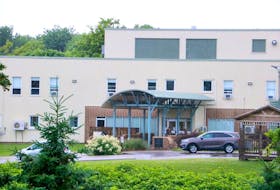
He was a medic, but also manned the radio room late nights, as part of the 24-7 operations offshore eastern Newfoundland and Labrador.
About once a week, crew members might get a chance at the radio to talk with loved ones at home. They weren’t to be left alone, Major said, so he found himself privy to little joys and horrors — personal ups and downs in the lives of his fellow crewmen.
He hadn’t worked a rig before, he told The Telegram Monday. And as a medic, he recalls aiding a man whose hand was cut clean through, another with a badly broken leg and some 40 people hit with food poisoning after a dinner meal gone horribly wrong.
Apart from the radio and the clinic, he helped settle newcomers into the rig’s living quarters, loaned books from a personal stash (with the odd Playboy circulating) and acted as a liaison between management and the locals aboard.
He knew the crew well. And he took pictures on occasion. He’s hoping his donated collection of photos to The Rooms, with a few showing smiling faces and men at ease, will help everyone to remember the individuals who died when the rig was lost.

“(People) should think about the people who died, who they were,” he said.
His own last day aboard was Feb. 11, 1982. He was flown home after his regular shift.
A few days later, on Feb. 15, the Ocean Ranger was reporting listing by 1 a.m. Minutes after, mayday calls went out. Before 2 a.m., a transmission reported crew heading to lifeboat stations.
At home, Major awoke to the news.
All of the 84 men who were on the rig at the time were killed.
Major was called from his home in Dunville to St. John’s, where he was sent to a building on the waterfront to help identify bodies that were being found and brought in.
[One of N.L.’s most tragic stories is still being told 35 years on]
Boats came with one or two bodies at a time, bringing them into the makeshift morgue. Over the course of two days, 22 of the deceased were found.
“It was gruesome,” Major said, recalling leaving the location for a couple of hours to rest at a hotel, only to be called back again. “You had companies down there. Men were hurt, crying some, some were upset and you had to deal with that.”
Along with his pictures, he has provided The Rooms with the crew list he was working from at the time. It shows highlighted names — people he personally identified. There are also notes on the pages, about family members who were contacted and were on their way.
[Photos bring back sad memories for former Telegram photographer]
The list is a reminder of the reach of the disaster. One name is an engineer from Mount Pearl, others a crane operator from Arnold’s Cove, a medic from Norris Point — just some of the hometowns (56 men were from this province). There were also men from other parts of Canada and the United Stated, including a derrickman from Connecticut and a driller from Louisiana, to name two.
In the days following, a great deal of time was required to return bodies to their homes and families, Major said.

He was called on to testify at the inquiry that followed. The process was not easy, but he said he has seen the value in the end, given the final report’s note of the need for improvements in offshore safety standards and in safety training. He is pleased far greater requirements are in place today.
After his time on the rig, Major went to work for the Canadian Coast Guard.
Asked why he is now donating his photos from the Ocean Ranger to the provincial archives, his answer was simple. They were just sitting on a dresser.
“If I died tomorrow, someone might throw them in the garbage,” he said.
His photos will join another collection relatively new to the archives, taken by David Boutcher, another rig worker. Boutcher was killed in the Ocean Ranger disaster. His mother donated the photos in 2015.

Who’s that?
Where’s that?
Together, two collections donated to The Rooms include about 100 personal photos
from the Ocean Ranger, with provincial archivists still trying to identify some
of the men pictured. After reaching out directly to families, the archivists are now asking anyone who might help with the identifications, or who might offer some context to the images, to spare the time for a look.
The manager of collections and projects at The Rooms, Larry Dohey said anyone can drop by The Rooms to see the pictures on request.

